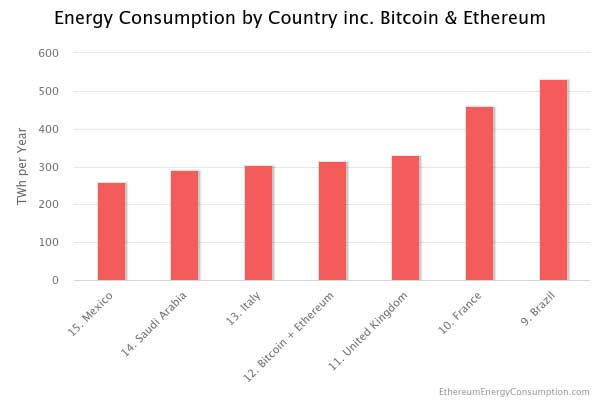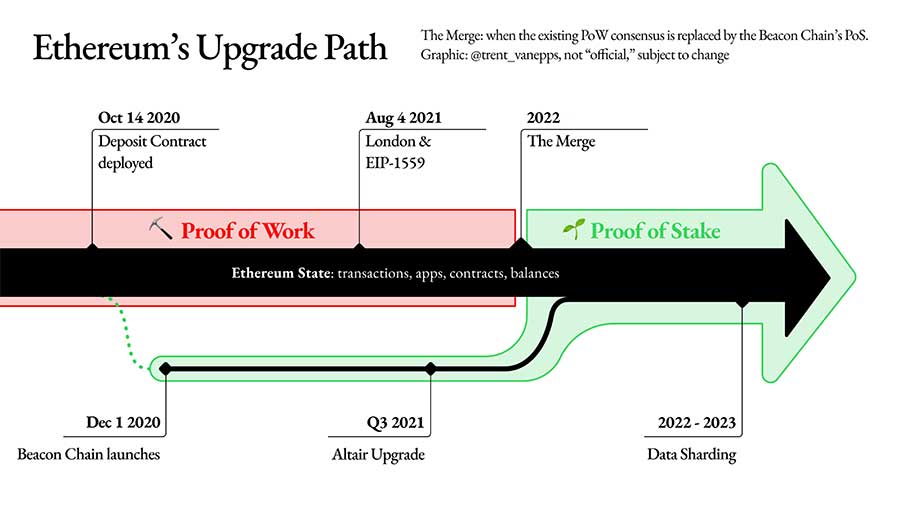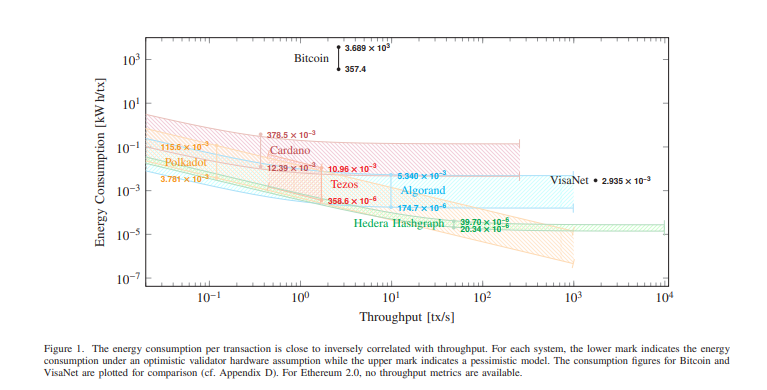People know that blockchains use a lot of energy. However, the reasons and ways to reduce this will be crucial to discussing blockchain-based applications and Web3 during a climate crisis.
Why it matters
It is not controversial to state that technology, economies, and businesses must reduce their emissions to net zero as soon possible if humanity is to avoid ecological destruction and the social and political chaos it will unleash.
Ironically, this technology is now mainstream and appears to consume as much as it’s possible to consume. Single transactions consume the same amount energy as a American household would over months.
These transactions are now becoming an increasingly important part of the marketers’ world as brands begin to get involved in digital tokens (NFTs), and begin to think about all the possibilities that Blockchain technology holds for them.
Before we spend our money on gimmicks that cost the earth, we must understand what’s happening.
Why so much energy
Cryptocurrencies on a distributed blockchain (distributed databases) are more than just speculative markets. They are theoretically both a store and payment technology.
It’s the last part, the payments that cryptocurrencies can be problematic. This is because every transaction must be approved by all the participants in the distributed database. This includes the minting or transfer of NFTs.
The difference between traditional payment systems like Mastercard or VISA is that banks use their enterprise-level infrastructure. This results in a more concentrated market, but a faster user interface. Blockchain infrastructure is distributed and delegated among miners. Nobody is the owner of the technology.
The blockchain’s miners are responsible to process transactions and add them to the blockchain. These super-users compete for processing work by trying to solve a cryptographic puzzle (a mathematical problem) faster than anyone else. The winner receives some currency in return for their processing. The winner will get some currency back, even though it is not done by a person using a calculator.
They also help to protect against network attacks. Sybil attacks are a form of attack in which the attacker creates multiple artificial identities (more then 51% of network members) to influence the majority’s decision on whether a transaction occurred.
It takes a lot of energy
The most cited Bitcoin/EthereumDigiconomist’s Energy Consumption Index estimates the enormous environmental impact of each transaction on each country and household to explain the large numbers.
- BitcoinThe original and more energy-intensive,, has an annual energy footprint similar that of Thailand and emits twice as much carbon as Kuwait. A single transaction consumes as much energy as one transaction. The average US household would spend more than 73.82 days. This is equivalent in number to well over 2 million VISA transactions.
- EthereumAlthough it is more efficient, a single transaction still consumes as much electricity. A household in the USA for more than 8.32 daysThis is the same as 200,000 VISA transactions. That’s nearly as much power over the year as the Netherlands.
Both blockchains, taken together, use large amounts of energy. They are just ahead of Italy and Saudi Arabia, and just behind Britain. It would be the 12th largest consumptive economy.

Image: Digiconomist
Change is coming
2022 will be a transitional years for blockchain technologies, as Ethereum, one of the largest, makes a switch between Eth1 and Eth2 (proofs-of-work). It was renamed to the execution and consensus layers as of yesterday, to reflect the fact it is an upgrade through merger rather than replacement.

Image: Ethereum
Although a shift to proof of stake (PoS), is a significant change, Ethereum hopes it will make its blockchain safer and less energy-intensive. It’s not just Ethereum 2, but also other PoS networks such as Polkadot and Cardano.
Proof-of–stake blockchains are a younger generation that realized that their predecessors had a limit to their scalability and instead use an existing network of validators senior users for lack of a better term. These users will stake their own cryptocurrency in return for the ability of validating a transaction in exchange of a reward.
Capital is effectively the replacement of energy. As a result of research, however, UCL Computer ScienceThese systems can vary greatly according to post-PoW blockchains energy usage.

Image: UCL Computer Science
The UCL research has shown that while proof-of work (PoW), network Bitcoin uses far less energy (relatively to the number of transactions it can perform at any given time), all proof-of stake networks use much less energy, two to three orders or more less than Bitcoin.
Although the researchers acknowledge that this is a work paper and that the results will be revised, there are positive signs.
Our research shows that PoS-based systems are capable of contributing to [the challenges posed by climate change]DLT could even be less energy-intensive than traditional central payment systems, raising hopes for DLT [Distributed Ledger Technology, i.e. a blockchain]Can make a positive contribution to combating climate change
What can you do?
Although the market is hot right now, with chatter about NFTs and Web 3.0 rife in the air, the technology is still in a transitional phase. It is important to be critical and picky about the underlying processes. This is not a neutral technology in the face of a climate crisis.
However, it’s not just a wasteful technology. Its applicability and useability will increase as the technology improves. It’s time to be curious, but not to put all your eggs into one basket.


